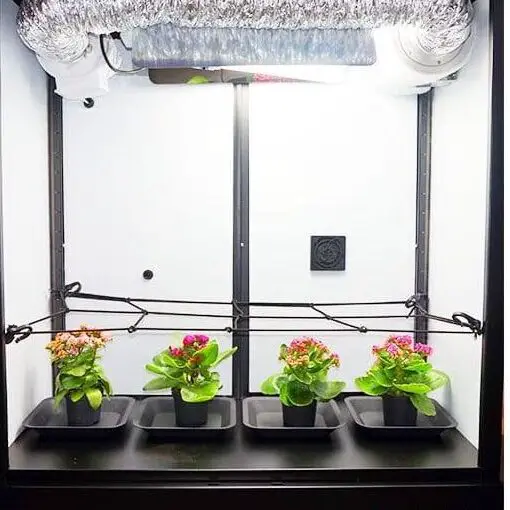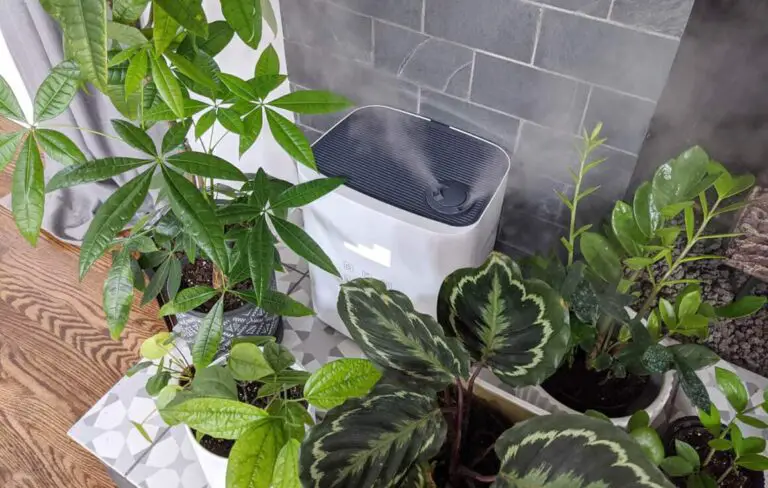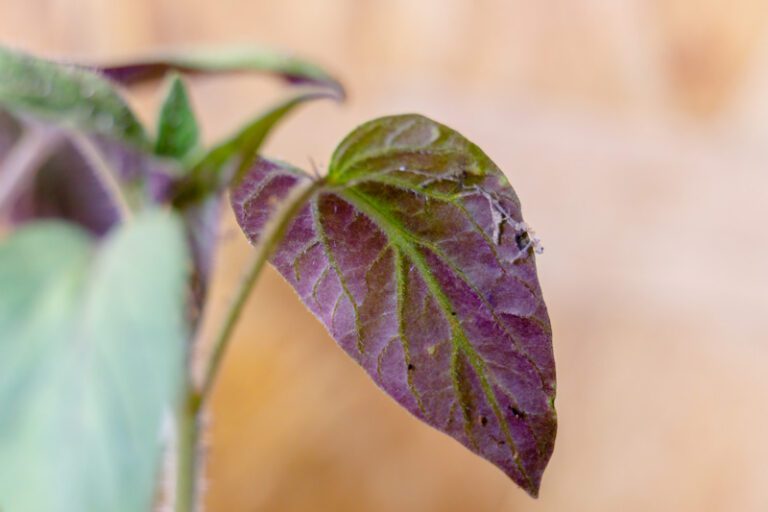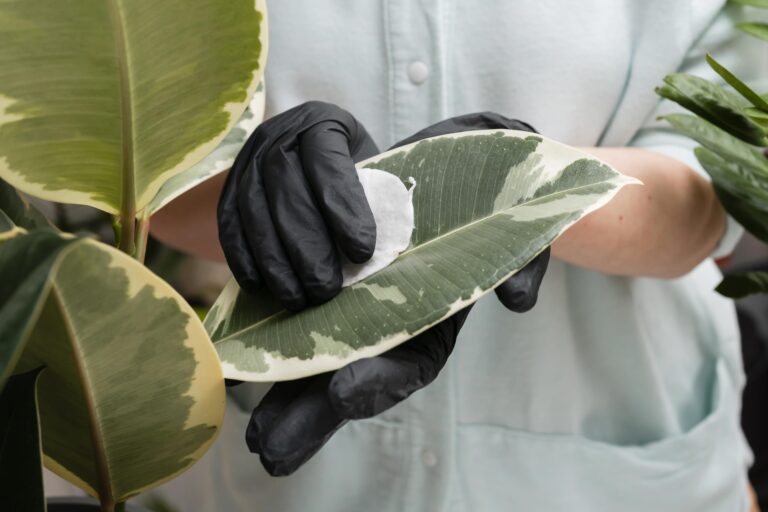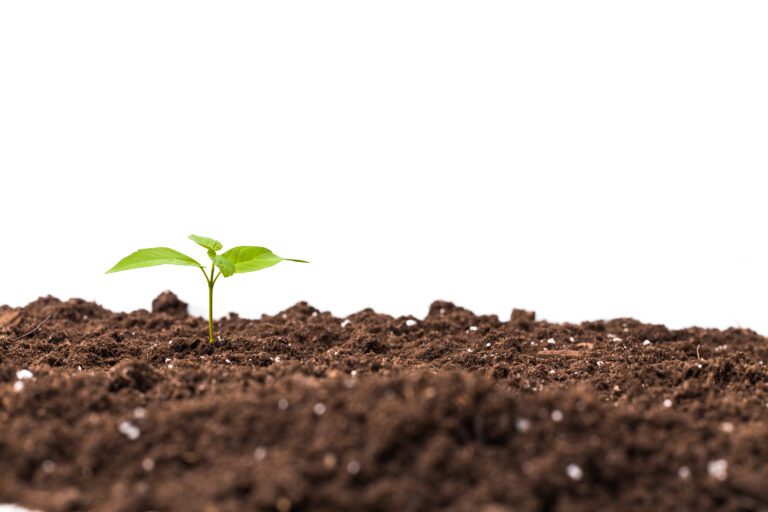Panoponica vs Hydroponic Technology: Which One is Better and Why?
Table of Contents
Understanding Panoponica Technology
Panoponica technology is a revolutionary system that has been gaining popularity among gardening enthusiasts and commercial growers alike. This innovative approach combines elements of hydroponics and aeroponics, creating a unique and effective way to grow plants. Unlike traditional soil-based gardening, Panoponica technology eliminates the need for soil altogether, allowing plants to thrive in a nutrient-rich mist.
The key to understanding Panoponica technology lies in its use of advanced irrigation systems and precise nutrient delivery. Plants are grown in a controlled environment, where water and nutrients are distributed through a network of specialized pipes and misting nozzles. This method not only ensures that plants receive an optimal balance of nutrients, but also promotes faster growth and increased crop yields. Additionally, the absence of soil reduces the risk of soil-borne diseases and pests, making Panoponica technology a more sustainable and eco-friendly option.
By harnessing the power of Panoponica technology, gardeners and farmers can enjoy a host of benefits. Firstly, the precise control over nutrient delivery allows for a more efficient use of resources. With traditional soil-based gardening, a significant amount of water and nutrients can be lost due to leaching and evaporation. However, Panoponica technology minimizes these losses, resulting in significant water and resource conservation. Furthermore, the ability to grow crops in a controlled environment eliminates the dependency on seasonal changes and external factors, making it possible to grow high-quality produce year-round. This not only benefits commercial growers by providing a consistent supply of fresh produce, but also empowers home gardeners to enjoy a bountiful harvest regardless of the weather conditions.
• Panoponica technology combines hydroponics and aeroponics to create a unique way to grow plants
• Plants are grown in a nutrient-rich mist, eliminating the need for soil
• Advanced irrigation systems and precise nutrient delivery ensure optimal growth and increased crop yields
• The absence of soil reduces the risk of soil-borne diseases and pests
• Panoponica technology allows for more efficient use of resources, minimizing water and nutrient loss
• Crops can be grown year-round in a controlled environment, independent of seasonal changes
• Commercial growers benefit from a consistent supply of fresh produce
• Home gardeners can enjoy a bountiful harvest regardless of weather conditions
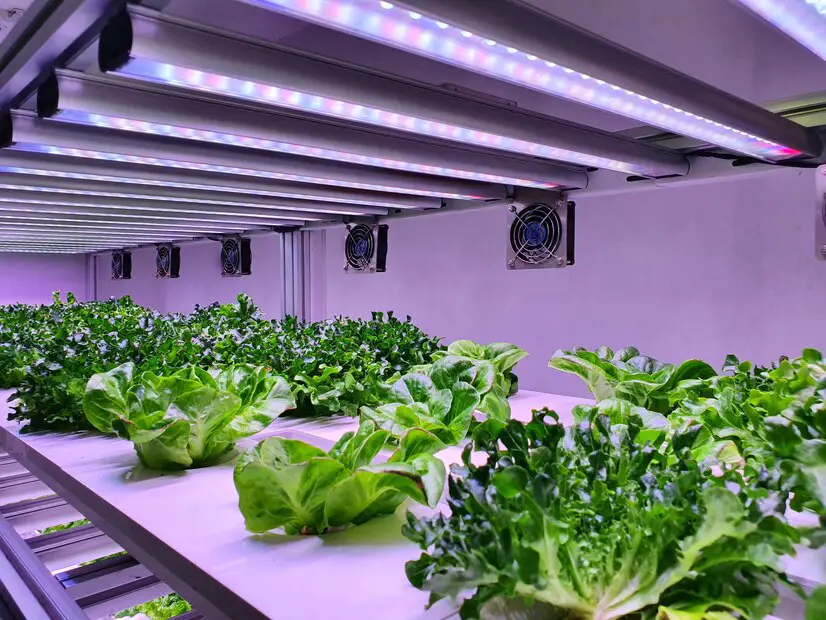
Understanding Hydroponic Technology
Hydroponic technology is a modern and innovative approach to gardening that has gained significant attention in recent years. It involves growing plants without soil, instead using a nutrient-rich water solution as the primary growing medium. The plants are typically placed in containers or systems that provide support and allow for the circulation of this nutrient solution.
One of the key advantages of hydroponic technology is its ability to optimize plant growth and yield. By controlling the nutrient levels, pH, and temperature of the water solution, gardeners can create ideal conditions for plant growth. This precision allows for faster growth rates and higher crop yields compared to traditional soil-based gardening methods. Additionally, since hydroponics eliminates the need for soil, it reduces the risk of soil-borne diseases and pests, leading to healthier plants and reduced pesticide use.
However, hydroponic technology also comes with its set of challenges. Firstly, it requires a significant initial investment in equipment and infrastructure, such as pumps, grow lights, and nutrient solutions. Additionally, hydroponic systems require careful monitoring and maintenance to ensure proper nutrient balance, pH levels, and water circulation. Any deviations can negatively impact plant growth and may require immediate corrective action. Finally, the dependence on artificial lighting can result in higher energy consumption, which can increase operational costs.
Overall, hydroponic technology offers exciting possibilities for modern gardening. Its ability to maximize crop yields in limited spaces and reduce the environmental impact makes it an attractive choice for both commercial growers and gardening enthusiasts. However, it’s crucial to consider the initial investment and ongoing maintenance requirements before embarking on a hydroponic gardening journey.
– Hydroponic technology is a modern and innovative approach to gardening that involves growing plants without soil.
– Nutrient-rich water solution is used as the primary growing medium.
– Plants are placed in containers or systems that provide support and allow for the circulation of the nutrient solution.
– Advantages of hydroponic technology include optimized plant growth and yield through precise control of nutrient levels, pH, and temperature.
– Faster growth rates and higher crop yields compared to traditional soil-based gardening methods.
– Reduction in risk of soil-borne diseases and pests, leading to healthier plants and reduced pesticide use.
Challenges of hydroponic technology:
– Significant initial investment required in equipment such as pumps, grow lights, and nutrient solutions.
– Careful monitoring and maintenance needed for proper nutrient balance, pH levels, and water circulation.
– Deviations from optimal conditions can negatively impact plant growth requiring immediate corrective action.
– Dependence on artificial lighting can result in higher energy consumption increasing operational costs.
Overall considerations:
– Hydroponic technology offers exciting possibilities for maximizing crop yields in limited spaces while reducing environmental impact.
– Attractive choice for both commercial growers & gardening enthusiasts
– Initial investment & ongoing maintenance requirements should be considered before starting a hydroponic garden.
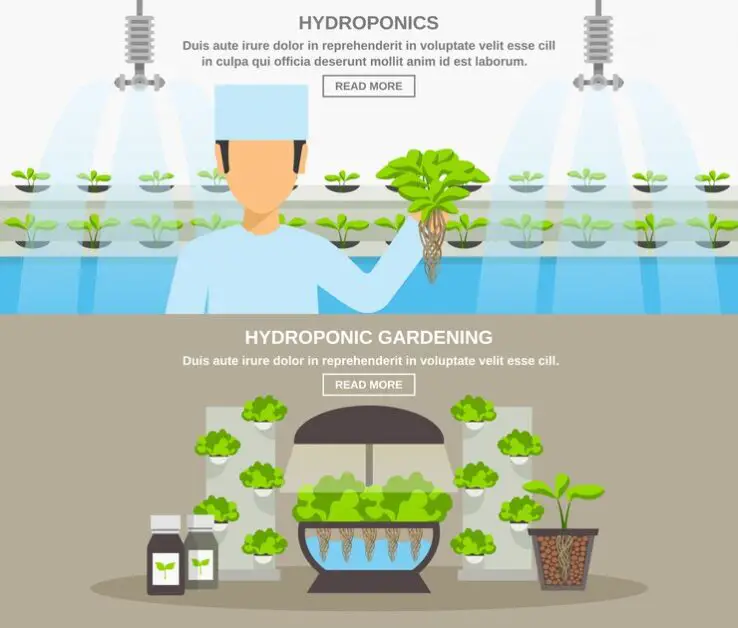
Benefits of Panoponica Technology
Panoponica technology offers a wide range of benefits for gardeners and plant enthusiasts. One of the key advantages is its ability to maximize crop yields. By utilizing a vertical farming system, Panoponica technology optimizes space and allows for more plants to be grown in a smaller area. This means that gardeners can grow a higher quantity of crops, increasing their overall harvest.
In addition to increased crop yields, Panoponica technology also promotes efficient water usage. Traditional gardening methods often result in excessive water consumption, leading to wastage and potential environmental harm. However, with Panoponica technology, water is carefully controlled and recycled within the system. This not only reduces water usage but also minimizes the risk of water pollution, making it an environmentally-friendly choice.
• Maximizes crop yields by utilizing vertical farming system
• Allows for more plants to be grown in a smaller area
• Increases overall harvest quantity
• Promotes efficient water usage
• Controls and recycles water within the system
• Reduces water consumption and wastage
• Minimizes risk of water pollution
Another benefit of Panoponica technology is its ability to optimize nutrient delivery to plants. Traditional gardening methods often rely on soil nutrients, which can vary in composition and quality. With Panoponica technology, nutrients are carefully measured and delivered directly to the plant roots through a controlled hydroponic system. This ensures that plants receive the necessary nutrients for optimal growth, leading to healthier and more productive crops.
Furthermore, Panoponica technology offers precise control over environmental factors such as temperature, humidity, and lighting conditions. These factors play a crucial role in plant growth and development. By maintaining optimal conditions consistently throughout the growing process, gardeners using Panoponica technology can ensure consistent crop quality year-round.
Panoponica technology also provides an innovative solution for urban gardening or limited space situations. Its vertical farming system allows individuals living in apartments or urban areas with limited outdoor space to grow their own fresh produce easily. This not only promotes self-sufficiency but also reduces reliance on commercially-grown crops that may have been treated with pesticides or preservatives.
Lastly, implementing Panoponica technology can contribute positively towards sustainable agriculture practices. The controlled environment provided by this technology reduces the need for chemical pesticides or herbicides that are commonly used in traditional farming methods. Additionally, since it maximizes space utilization and optimizes resource efficiency (such as water), it helps conserve natural resources while minimizing waste generation.
In conclusion, Panoponica technology offers numerous benefits for gardeners and plant enthusiasts alike. From maximizing crop yields to promoting efficient resource usage and enabling urban gardening possibilities – this innovative approach revolutionizes how we grow our food sustainably.
Benefits of Hydroponic Technology
Hydroponic technology offers a range of benefits that make it an attractive option for gardening enthusiasts. One of the key advantages is the significant increase in crop yield compared to traditional soil-based cultivation methods. By providing plants with a precisely controlled nutrient solution, hydroponics allows for optimal growth and development, resulting in healthier and more productive plants. This higher yield can be especially beneficial for individuals or communities seeking to maximize their food production in limited spaces or harsh environments.
Another notable benefit of hydroponics is its water efficiency. Unlike traditional farming techniques, hydroponics utilizes water in a closed-loop system, where it is recirculated and reused. This means that significantly less water is required, making it an environmentally sustainable choice. In fact, studies have shown that hydroponic systems can reduce water usage by up to 90% compared to soil-based agriculture. This not only conserves a valuable resource but also helps to minimize the strain on local water supplies, especially in regions prone to drought or water scarcity.
Overall, hydroponic technology provides a range of benefits, from increased crop yield to water efficiency. Its ability to optimize plant growth and development, combined with its sustainable use of resources, makes it a valuable option for gardening enthusiasts and a promising solution for sustainable food production.
• Hydroponic technology significantly increases crop yield compared to traditional soil-based cultivation methods.
• Plants grown in hydroponic systems receive a precisely controlled nutrient solution, leading to healthier and more productive plants.
• Higher crop yield is especially beneficial for maximizing food production in limited spaces or harsh environments.
• Hydroponics utilizes water in a closed-loop system, recirculating and reusing it, resulting in significantly less water usage.
• Studies have shown that hydroponic systems can reduce water usage by up to 90% compared to soil-based agriculture.
• Water efficiency of hydroponics helps conserve valuable resources and minimize strain on local water supplies, particularly in drought-prone regions.
• Overall, hydroponic technology offers increased crop yield and sustainable use of resources, making it an attractive option for gardening enthusiasts and a promising solution for sustainable food production.
Environmental Impact of Panoponica Technology
Panoponica technology offers several environmental advantages over traditional agricultural practices. One key benefit is its significantly reduced water usage. With traditional farming, water is often wasted due to evaporation, runoff, and inefficient irrigation methods. However, Panoponica systems use a closed-loop recirculation system that minimizes water loss, leading to water savings of up to 90% compared to conventional farming. This not only conserves water resources but also reduces the strain on local water supplies and helps mitigate water scarcity issues.
Furthermore, Panoponica technology eliminates the need for chemical pesticides and herbicides. Traditional farming methods rely heavily on the use of these harmful substances, which can lead to air and water pollution, soil contamination, and adverse effects on human health. In contrast, Panoponica systems utilize integrated pest management techniques and natural methods such as biological controls and companion planting to prevent and manage pests and diseases. This significantly reduces the environmental impact and potential health risks associated with chemical interventions. Additionally, as Panoponica systems are typically enclosed or semi-enclosed, they provide a physical barrier against pests and diseases, further reducing the need for chemicals.
Overall, the environmental impact of Panoponica technology is markedly lower compared to conventional farming methods. Its water-saving capabilities and reduced reliance on chemical interventions contribute to sustainable agriculture practices, ensuring the long-term health and preservation of our ecosystems.
– Panoponica technology reduces water usage by up to 90% compared to traditional farming methods
– Closed-loop recirculation system minimizes water loss and conserves water resources
– Helps mitigate water scarcity issues and reduces strain on local water supplies
– Eliminates the need for chemical pesticides and herbicides
– Integrated pest management techniques and natural methods are used instead
– Reduces air and water pollution, soil contamination, and adverse effects on human health
– Enclosed or semi-enclosed systems provide a physical barrier against pests and diseases, reducing the need for chemicals
Environmental Impact of Hydroponic Technology
Hydroponic technology offers a range of benefits for plant cultivation, including its potential to minimize environmental impact. One notable advantage is its efficient use of water resources. Compared to traditional soil-based farming, hydroponics uses significantly less water due to its recirculating system. The closed-loop nature of hydroponics allows for the reuse of water, preventing wastage and reducing overall water consumption. This not only conserves a precious resource but also helps to alleviate water scarcity concerns in regions experiencing drought or limited water access.
In addition, hydroponic systems have the potential to reduce the need for chemical fertilizers and pesticides, leading to a decreased environmental impact. By growing plants in a controlled environment, hydroponics allows for precise nutrient management, ensuring that plants receive optimal levels of nutrients without the need for excessive fertilization. Furthermore, the absence of soil in hydroponic systems minimizes the risk of soil-based pests and diseases, reducing the reliance on chemical pesticides. This not only promotes plant health but also prevents the release of harmful chemicals into the environment, contributing to a more sustainable and eco-friendly approach to agriculture.
Overall, the environmental impact of hydroponic technology is considerably lower than that of traditional farming methods. Its efficient water usage and reduced reliance on chemical inputs make it an attractive option for environmentally conscious gardeners and farmers. As we continue to address global sustainability challenges, the adoption of hydroponics could play a significant role in promoting more sustainable and responsible agricultural practices.
• Hydroponic technology uses significantly less water compared to traditional soil-based farming
• The closed-loop system of hydroponics allows for the reuse of water, preventing wastage and conserving resources
• Hydroponics can help alleviate water scarcity concerns in regions experiencing drought or limited water access
• Hydroponic systems reduce the need for chemical fertilizers and pesticides
• Precise nutrient management in hydroponics ensures optimal levels without excessive fertilization
• Absence of soil minimizes the risk of pests and diseases, reducing reliance on chemical pesticides
• Hydroponic technology has a lower environmental impact than traditional farming methods
• It is an attractive option for environmentally conscious gardeners and farmers
• Adoption of hydroponics promotes sustainable and responsible agricultural practices
Cost Analysis of Panoponica Technology
The cost analysis of Panoponica technology is an essential aspect to consider for gardening enthusiasts. By understanding the financial implications of implementing this innovative approach, individuals can make informed decisions about whether Panoponica technology is a viable option for their gardening needs.
One of the significant advantages of Panoponica technology is its ability to maximize crop yield while utilizing minimal resources. This efficiency translates into cost savings for gardeners, as it reduces the amount of water, nutrients, and space required compared to traditional gardening methods. Additionally, Panoponica technology minimizes the need for pesticides and herbicides, which can further reduce ongoing expenses.
In terms of initial investment, the cost of setting up a Panoponica system may be higher than traditional gardening methods. However, over time, the sustainable nature of this technology can lead to substantial long-term savings. Moreover, advancements in Panoponica technology continue to drive down costs, making it a more accessible option for both large-scale agricultural operations and home gardeners alike. By carefully evaluating the cost benefits over the long term, individuals can determine if Panoponica technology aligns with their budget and gardening goals.
• Panoponica technology maximizes crop yield while minimizing resource usage
• Reduces the need for water, nutrients, and space compared to traditional gardening methods
• Minimizes the use of pesticides and herbicides, leading to ongoing cost savings
• Initial investment may be higher than traditional gardening methods
• Sustainable nature of Panoponica technology leads to substantial long-term savings
• Advancements in technology drive down costs over time
• Suitable for both large-scale agricultural operations and home gardeners
• Careful evaluation of cost benefits helps determine if it aligns with budget and goals
Cost Analysis of Hydroponic Technology
Hydroponic technology offers several cost advantages over traditional soil-based gardening methods. One of the key cost benefits is the efficient utilization of water. Hydroponic systems use up to 90% less water compared to conventional farming, as the water is recirculated through the system rather than being lost through evaporation or runoff. This not only reduces water costs, but also minimizes the need for irrigation infrastructure and conserves a valuable resource.
Furthermore, hydroponics eliminates the need for soil, which can be a significant expense for gardeners. Instead, plants are grown in a nutrient-rich water solution, eliminating the need for expensive soil amendments or fertilizers. Additionally, hydroponic systems can be set up in smaller spaces, allowing for more efficient land use and reducing the overall cost of land acquisition or rental.
In conclusion, hydroponic technology offers compelling cost advantages over traditional gardening methods. With reduced water usage and the elimination of soil expenses, hydroponics can be a cost-effective solution for gardening enthusiasts. By utilizing efficient resource management and maximizing space utilization, hydroponics emerges as a financially viable option for those looking to grow plants in a sustainable and economically efficient manner.
• Hydroponic systems use up to 90% less water compared to conventional farming
• Water is recirculated through the system, reducing water costs and minimizing the need for irrigation infrastructure
• Hydroponics eliminates the need for expensive soil amendments or fertilizers
• Plants are grown in a nutrient-rich water solution instead of soil
• Smaller spaces can be used for hydroponic systems, reducing land acquisition or rental costs
Comparison of Panoponica and Hydroponic Technologies in Crop Yield
Panoponica and hydroponic technologies have revolutionized the way we cultivate crops, offering sustainable and efficient alternatives to traditional soil-based farming. When it comes to comparing the two in terms of crop yield, several factors come into play.
Firstly, hydroponic systems provide an ideal environment for plant growth by delivering a precise blend of water, nutrients, and oxygen directly to the roots. This controlled setup allows plants to absorb nutrients more efficiently, resulting in accelerated growth and higher yields. Moreover, hydroponics eliminates the risk of nutrient deficiencies or imbalances often encountered in soil-based farming, further boosting crop productivity.
On the other hand, Panoponica technology takes a different approach by combining both hydroponics and aeroponics. By utilizing a nutrient-rich mist, Panoponica systems envelop the plants’ roots, providing efficient and ample access to nutrients. This unique method enhances nutrient absorption, promoting robust growth and maximizing crop yield. Additionally, Panoponica technology offers the advantage of easier root inspection and maintenance, making it easier to identify and address any potential issues that may affect crop health and yield.
Ultimately, both Panoponica and hydroponic technologies excel in maximizing crop yield through their precise control over nutrient delivery. However, the specific results may differ depending on the crop type, environmental conditions, and the level of expertise in implementing and managing each system. It is crucial for gardening enthusiasts to consider these factors and carefully assess their needs before deciding which technology aligns best with their goals and resources.
• Hydroponic systems provide a precise blend of water, nutrients, and oxygen directly to the roots, resulting in accelerated growth and higher yields.
• Hydroponics eliminates the risk of nutrient deficiencies or imbalances often encountered in soil-based farming.
• Panoponica technology combines hydroponics and aeroponics, enveloping plants’ roots with a nutrient-rich mist for efficient nutrient absorption.
• Panoponica technology promotes robust growth and maximizes crop yield through enhanced nutrient absorption.
• Panoponica technology offers easier root inspection and maintenance for identifying potential issues that may affect crop health and yield.
• The specific results of both technologies may vary depending on crop type, environmental conditions, and expertise in implementing and managing each system.
• Garden enthusiasts should carefully assess their needs before deciding which technology aligns best with their goals and resources.
Comparison of Panoponica and Hydroponic Technologies in Water Usage
Panoponica and hydroponic technologies are both innovative methods of growing plants without soil, but they differ in their water usage. Water is a crucial resource in both systems, but the way it is utilized varies.
In hydroponics, plants are grown in a nutrient-rich water solution, which is continuously circulated around the root system. The water is absorbed and utilized by the plants, with any excess being recycled back into the system. This closed-loop system minimizes water waste, making hydroponics an efficient technology when it comes to water consumption.
On the other hand, Panoponica technology takes a different approach. It utilizes a combination of water and air, creating a mist-like environment for plant growth. This mist is carefully controlled, providing the plants with the necessary moisture while also reducing water usage compared to traditional farming methods.
While both Panoponica and hydroponic technologies prioritize water efficiency, hydroponics generally has an edge in this aspect due to its closed-loop system. However, it is important to consider other factors such as crop yield, nutrient efficiency, and space requirements when comparing the two technologies.
• In hydroponics, water is continuously circulated around the root system, minimizing water waste.
• Any excess water in hydroponic systems is recycled back into the system, further reducing water consumption.
• Panoponica technology utilizes a mist-like environment for plant growth, combining water and air to provide moisture.
• The controlled mist in Panoponica technology helps reduce overall water usage compared to traditional farming methods.
• While hydroponics has an edge in terms of closed-loop water efficiency, other factors such as crop yield should also be considered when comparing the two technologies.
• Nutrient efficiency is another important factor to consider when comparing Panoponica and hydroponic technologies.
Comparison of Panoponica and Hydroponic Technologies in Nutrient Efficiency
Panoponica and hydroponic technologies offer innovative solutions for crop production, particularly in environments with limited access to arable land. When it comes to nutrient efficiency, both systems have their distinct advantages.
In Panoponica technology, nutrient efficiency is achieved through a combination of hydroponics and aeroponics, where plants are grown in a soilless medium while being misted with nutrient-rich solutions. This method enables the targeted delivery of nutrients directly to the plant’s roots, ensuring maximum absorption and utilization. The controlled environment also allows for precise monitoring and adjustment of nutrient levels, minimizing wastage and optimizing plant growth.
On the other hand, hydroponic technology relies on a water-based solution to provide nutrients to plants, eliminating the need for soil altogether. By directly supplying the essential elements required for growth, hydroponics ensures that plants receive optimal nutrition without any loss due to soil leaching or nutrient runoff. The efficiency of this system lies in its ability to recycle and reuse nutrient solutions, further reducing waste and resource consumption.
Both Panoponica and hydroponic technologies offer significant improvements in nutrient efficiency compared to traditional soil-based cultivation methods. However, the specific performance of each system may vary depending on factors such as plant species, nutrient formulation, and management practices. It is essential for growers to carefully consider their specific needs and goals when choosing between these technologies to maximize nutrient efficiency and overall crop productivity.
• Panoponica technology combines hydroponics and aeroponics for maximum nutrient efficiency
• Nutrient-rich solutions are misted directly onto plant roots for targeted delivery
• Precise monitoring and adjustment of nutrient levels minimize wastage and optimize growth
• Hydroponic technology eliminates the need for soil, providing optimal nutrition to plants
• Water-based solution supplies essential elements without soil leaching or nutrient runoff
• Recycling and reusing nutrient solutions further reduce waste and resource consumption
• Both technologies offer improvements in nutrient efficiency compared to soil-based methods
• Performance may vary based on factors such as plant species, nutrient formulation, and management practices
• Growers should consider specific needs and goals when choosing between these technologies
Certainly! Here is a table comparing the nutrient efficiency of Panoponica and Hydroponic technologies:
| Comparison of Panoponica and Hydroponic Technologies in Nutrient Efficiency |
|---|
| Both hydroponic and Panoponica technologies deliver nutrients directly to plant roots, allowing for more efficient growth than traditional soil-based farming . |
| However, Panoponica technology often incorporates more advanced nutrient delivery and recycling methods, optimizing plant growth and reducing waste . |
| This approach improves plant health and yield and minimizes resource use . |
| In addition, Panoponica systems offer advanced control over environmental factors such as temperature, humidity, and light . |
| This level of control is more sophisticated than what is typically found in standard hydroponic setups . |
| Hydroponic technology, on the other hand, is a more established method of soil-less farming and is suitable for a variety of crops . |
Comparison of Panoponica and Hydroponic Technologies in Space Requirements
When considering the space requirements of Panoponica and Hydroponic technologies, it is evident that both systems offer distinct advantages. Panoponica technology, with its modular design and vertical farming approach, allows for efficient use of space. The plants are grown in vertically stacked layers, which maximizes the production area while minimizing the footprint. This makes it an ideal choice for urban areas where space is limited.
Hydroponic technology, on the other hand, requires a bit more room. The plants are grown in nutrient-rich water solutions, which are usually housed in large containers or trays. While this may require more horizontal space compared to Panoponica technology, hydroponic systems can still be customized to fit within available spaces, such as greenhouses or indoor grow rooms. With proper planning and optimization, hydroponics can be implemented successfully in various settings, making it a versatile option for growers.
In conclusion, both Panoponica and Hydroponic technologies offer effective solutions for maximizing space utilization in agriculture. The choice between the two ultimately depends on the specific needs and constraints of the grower. Whether it is the vertical stacking capability of Panoponica or the adaptability of hydroponics, each technology presents viable options for maximizing crop production in limited spaces. By carefully considering the space requirements and capabilities of each system, gardening enthusiasts can choose the best approach to suit their unique circumstances. So, a careful evaluation of available space and consideration of other factors such as cost, environmental impact, and crop yield should guide the decision-making process.
• Panoponica technology offers efficient use of space with its modular design and vertical farming approach.
• The plants are grown in vertically stacked layers, maximizing production area while minimizing footprint.
• Ideal for urban areas where space is limited.
• Hydroponic technology requires more room compared to Panoponica.
• Plants are grown in nutrient-rich water solutions housed in large containers or trays.
• Can be customized to fit within available spaces such as greenhouses or indoor grow rooms.
• Versatile option for growers with proper planning and optimization.
• Both technologies offer effective solutions for maximizing space utilization in agriculture.
• Choice between the two depends on specific needs and constraints of the grower.
• Careful evaluation of available space, cost, environmental impact, and crop yield should guide decision-making process.
Certainly! Here is a table comparing the space requirements of Panoponica and Hydroponic technologies:
| Comparison of Panoponica and Hydroponic Technologies in Space Requirements |
|---|
| Hydroponic technology typically involves single-level growing systems . |
| Panoponica technology, on the other hand, utilizes a multi-tiered approach that maximizes space efficiency . |
| This makes Panoponica technology ideal for urban farming and areas with limited land availability . |
| In addition, Panoponica systems offer advanced control over environmental factors such as temperature, humidity, and light . |
| This level of control is more sophisticated than what is typically found in standard hydroponic setups . |
| However, Panoponica technology may involve higher initial setup costs compared to hydroponic systems . |
Challenges and Limitations of Panoponica Technology
Panoponica technology, although promising, comes with its fair share of challenges and limitations. One of the primary challenges is the initial setup cost. The advanced equipment and technology required for Panoponica systems can be expensive, making it less accessible for small-scale gardeners or individuals with limited financial resources. Additionally, the complexity of the system may intimidate some beginners, requiring a significant learning curve and technical knowledge to operate effectively.
Another limitation is the reliance on a stable power supply. Panoponica systems heavily depend on electricity to control lighting, temperature, humidity, and nutrient distribution. Any disruptions in power can have detrimental effects on the plants’ growth and overall system performance. This can be a concern in areas with frequent power outages or for gardeners who practice off-grid gardening.
Furthermore, maintaining the proper balance of nutrients in Panoponica systems can be a challenge. Each plant has unique nutrient requirements, and ensuring that the plants receive the right amount of nutrients at the right time can be a meticulous process. Failure to achieve the correct balance can lead to nutrient deficiencies or toxicities, impacting the plants’ health and productivity.
Despite these challenges and limitations, Panoponica technology has shown great potential in revolutionizing the way we grow crops. By addressing these challenges and improving accessibility, affordability, and ease of use, Panoponica systems can become a viable option for both professional farmers and gardening enthusiasts alike.
• Initial setup cost can be expensive, making it less accessible for small-scale gardeners or individuals with limited financial resources.
• The complexity of the system may intimidate beginners, requiring a significant learning curve and technical knowledge to operate effectively.
• Panoponica systems heavily depend on a stable power supply, which can be a concern in areas with frequent power outages or for off-grid gardening.
• Maintaining the proper balance of nutrients in Panoponica systems can be challenging due to each plant’s unique nutrient requirements.
• Failure to achieve the correct nutrient balance can lead to nutrient deficiencies or toxicities, impacting plant health and productivity.
Challenges and Limitations of Hydroponic Technology
Hydroponic technology, although widely embraced for its numerous benefits, does come with its fair share of challenges and limitations. One significant challenge is the initial cost of setting up a hydroponic system. Compared to traditional soil-based gardening, the expenses involved in purchasing grow lights, nutrient solutions, pumps, and other essential equipment can be quite high. This can deter some gardening enthusiasts from adopting hydroponics as a viable option.
Another limitation of hydroponic technology is the requirement for constant monitoring and maintenance. The delicate balance of water, nutrients, and pH levels in a hydroponic system needs to be carefully regulated to ensure optimal plant growth. Failure to monitor these parameters can lead to nutrient deficiencies, diseases, and ultimately, crop failure. This level of attention and time commitment can be demanding for individuals who have limited resources or knowledge in hydroponics.
Despite these challenges and limitations, it’s important to note that hydroponics still offers significant advantages over traditional soil-based gardening methods. By addressing the challenges head-on and implementing best practices, gardening enthusiasts can overcome these obstacles and benefit from the efficiency, productivity, and sustainability that hydroponic technology has to offer. So, with the right knowledge, dedication, and resources, the limitations of hydroponics can be mitigated, making it a viable and rewarding option for growers seeking innovative solutions to their gardening endeavors.
• The initial cost of setting up a hydroponic system can be quite high, including expenses for grow lights, nutrient solutions, pumps, and other essential equipment.
• Constant monitoring and maintenance are required to regulate the delicate balance of water, nutrients, and pH levels in a hydroponic system.
• Failure to monitor these parameters can lead to nutrient deficiencies, diseases, and crop failure.
• Limited resources or knowledge in hydroponics can make it challenging for individuals to maintain optimal conditions in their systems.
• Despite these challenges, hydroponics offers significant advantages over traditional soil-based gardening methods such as increased efficiency and productivity.
• By addressing the challenges through best practices and dedicating time and resources to learning about hydroponics, growers can mitigate limitations and benefit from its rewards.
Future Prospects for Panoponica Technology
The future prospects for Panoponica technology are indeed promising as it offers a range of advantages for gardening enthusiasts and commercial farmers alike. One of the key benefits of Panoponica technology is its ability to maximize crop yield in limited space. With this innovative system, plants can be grown vertically, making efficient use of vertical space and allowing for a higher volume of crops to be grown in a smaller area.
Additionally, Panoponica technology offers precise control over the growing environment, which can greatly enhance crop growth and quality. With features such as automated irrigation, nutrient delivery, and lighting systems, growers have the ability to tailor the conditions to suit the specific needs of different plants. This precision leads to optimized plant growth, shorter growth cycles, and increased overall productivity.
Overall, the future prospects for Panoponica technology are bright, as it combines efficiency, precision, and sustainability to meet the growing demands of the agricultural industry. As more research and development is conducted in this field, we can expect to see further advancements that will revolutionize the way we approach gardening and farming. Whether it’s for small-scale home gardening or large-scale commercial operations, Panoponica technology holds great promise for the future of agriculture.
• Panoponica technology maximizes crop yield in limited space by allowing plants to be grown vertically.
• The system makes efficient use of vertical space, enabling a higher volume of crops to be grown in a smaller area.
• Precise control over the growing environment is another advantage of Panoponica technology.
• Automated irrigation, nutrient delivery, and lighting systems allow growers to tailor conditions for different plants’ specific needs.
• This precision leads to optimized plant growth, shorter growth cycles, and increased overall productivity.
• As more research and development is conducted in this field, further advancements can be expected.
• These advancements have the potential to revolutionize gardening and farming approaches.
• Panoponica technology holds great promise for both small-scale home gardening and large-scale commercial operations.
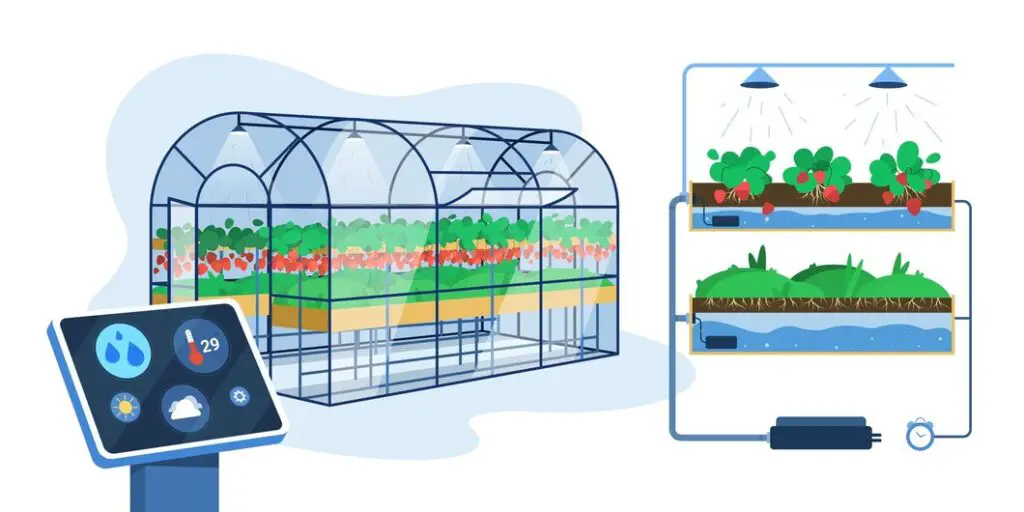
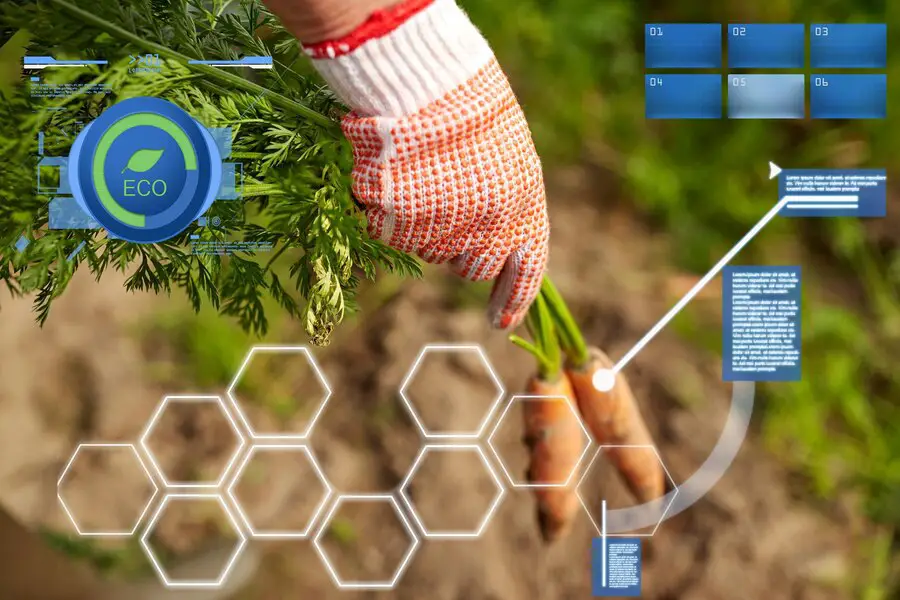
Future Prospects for Hydroponic Technology
The future prospects for hydroponic technology are incredibly promising. As our population continues to grow and arable land becomes increasingly limited, hydroponics offers a sustainable and efficient solution for food production. Its ability to cultivate crops without soil, using water-based nutrient solutions, allows for year-round farming in any location, regardless of climate or geographical constraints.
One of the key advantages of hydroponic technology is its remarkable water efficiency. Compared to traditional soil-based farming, hydroponics requires significantly less water, as the system recirculates and reuses water, minimizing waste. This is particularly important in regions where water scarcity is a pressing concern. Additionally, hydroponics eliminates the need for pesticides and herbicides, resulting in cleaner, safer produce. With consumers becoming more conscious of their health and the environment, this further strengthens the appeal of hydroponically grown crops.
Furthermore, hydroponic technology has the potential to revolutionize urban agriculture. With the global trend of urbanization, space for traditional farming is limited. Hydroponics allows for vertical farming in urban areas, utilizing abandoned buildings, rooftops, and indoor spaces. This not only saves valuable land but also reduces transportation costs and carbon emissions associated with importing food from distant regions.
In conclusion, the future of hydroponic technology looks incredibly promising from both an environmental and agricultural standpoint. Its water efficiency, pesticide-free cultivation, and ability to thrive in urban environments position it as a sustainable and practical solution to our growing food demands. With ongoing advancements and increased awareness, hydroponics has the potential to play a vital role in the future of farming.
• Hydroponics offers a sustainable and efficient solution for food production in a world with limited arable land.
• The ability to cultivate crops without soil allows for year-round farming regardless of climate or geographical constraints.
• Hydroponic technology is remarkably water-efficient, requiring significantly less water than traditional soil-based farming.
• The system recirculates and reuses water, minimizing waste and addressing concerns about water scarcity in certain regions.
• Hydroponics eliminates the need for pesticides and herbicides, resulting in cleaner and safer produce.
• This appeals to consumers who are increasingly conscious of their health and the environment.
• Urban agriculture can be revolutionized by hydroponic technology, allowing for vertical farming in limited spaces such as abandoned buildings or rooftops.
• Utilizing indoor spaces for hydroponics reduces transportation costs and carbon emissions associated with importing food from distant regions.
• Overall, hydroponic technology has great potential to meet our growing food demands while being environmentally friendly.
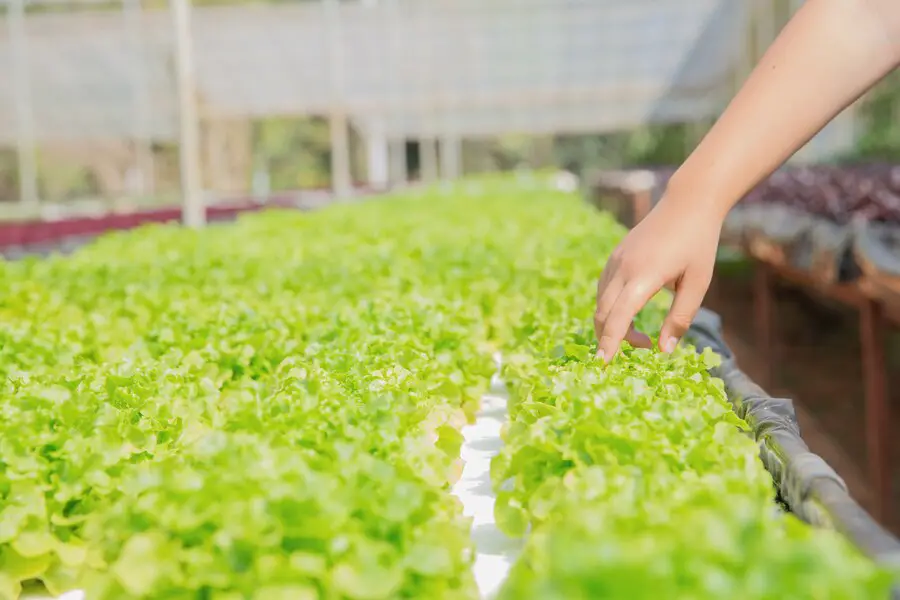
Conclusion: Which Technology is Better?
In comparing the benefits, environmental impact, cost analysis, and crop yield of Panoponica and hydroponic technologies, it becomes clear that both methods have their advantages and limitations. Panoponica technology offers the unique benefit of combining hydroponics with aeroponics, resulting in improved nutrient efficiency and reduced water consumption. However, hydroponic technology remains a reliable and efficient method for growing plants without soil, achieving high crop yields and optimizing space utilization.
Considering the environmental impact, both technologies have their merits. Panoponica technology minimizes water usage, which is crucial in regions facing water scarcity. Additionally, the reduced need for pesticides and herbicides in both technologies contributes to a healthier and more sustainable agricultural system. However, the energy consumption associated with Panoponica’s aeroponic component needs to be taken into account when evaluating its environmental impact.
When comparing the cost analysis, hydroponic technology tends to have a lower initial investment, making it more accessible to a broader range of gardeners. However, Panoponica’s precision-controlled environment can lead to higher crop yields, potentially offsetting its higher upfront costs in the long run. It is important for gardening enthusiasts to consider their budget and long-term goals when selecting the most suitable technology.
In summary, there is no definitive answer to which technology is better between Panoponica and hydroponics. Both methods have their unique benefits, environmental impacts, costs, and crop yields. Gardeners should carefully evaluate their specific needs, resources, and goals when deciding which technology to adopt. Understanding the distinct advantages and limitations of each method will enable gardeners to make informed choices and maximize their plant cultivation success.
• Panoponica technology offers improved nutrient efficiency and reduced water consumption through the combination of hydroponics and aeroponics.
• Hydroponic technology is reliable and efficient, achieving high crop yields and optimizing space utilization.
• Panoponica minimizes water usage, making it suitable for regions facing water scarcity.
• Both technologies reduce the need for pesticides and herbicides, contributing to a healthier and more sustainable agricultural system.
• The energy consumption associated with Panoponica’s aeroponic component needs to be considered when evaluating its environmental impact.
• Hydroponic technology has a lower initial investment cost, while Panoponica’s precision-controlled environment can lead to higher crop yields in the long run.
• Gardeners should consider their budget and long-term goals when selecting the most suitable technology.
Please do watch the video!
What is Panoponica technology?
Panoponica technology is a specialized agricultural system that combines elements of both hydroponics and aeroponics. It involves growing plants in a soilless environment and supplying nutrients through a misting system.
How does Panoponica technology differ from hydroponic technology?
While hydroponic technology involves growing plants in a water-based nutrient solution, Panoponica technology adds an aeroponic component by misting the roots with nutrients. This allows for better oxygenation and nutrient absorption by the plants.
What are the benefits of Panoponica technology?
Panoponica technology offers several benefits, including increased crop yields, improved nutrient efficiency, reduced water usage, and more efficient space utilization. It also minimizes the risk of soil-borne diseases and pests.
What are the environmental impacts of Panoponica technology?
Panoponica technology has a positive environmental impact as it requires less water compared to traditional soil-based farming. It also minimizes the use of pesticides and herbicides, reducing the pollution of water sources.
How does Panoponica technology compare to hydroponic technology in terms of crop yield?
Studies have shown that Panoponica technology can result in higher crop yields compared to hydroponic technology. The misting system in Panoponica provides better nutrient absorption and oxygenation, promoting healthier plant growth.
What are the challenges and limitations of Panoponica technology?
Some of the challenges and limitations of Panoponica technology include higher initial setup costs, the need for specialized equipment, and the requirement for a controlled environment. It also requires continuous monitoring and maintenance.
How does Panoponica technology compare to hydroponic technology in terms of water usage?
Panoponica technology generally requires less water than hydroponic technology. The misting system in Panoponica uses water more efficiently, reducing overall water consumption and increasing water conservation.
What are the future prospects for Panoponica technology?
The future prospects for Panoponica technology are promising, as it offers a sustainable and efficient solution for agricultural production. With ongoing advancements in technology, Panoponica is expected to become more accessible and cost-effective.
Is Panoponica technology suitable for all types of crops?
Panoponica technology can be used for a wide range of crops, including leafy greens, herbs, vegetables, and some fruits. However, certain crops with extensive root systems may not be as suitable for this technology.
How does Panoponica technology compare to hydroponic technology in terms of nutrient efficiency?
Panoponica technology generally provides higher nutrient efficiency compared to hydroponic technology. The misting system ensures that the nutrients are directly delivered to the roots, allowing for better absorption and utilization by the plants.
What are the cost implications of implementing Panoponica technology?
Implementing Panoponica technology may involve higher initial setup costs compared to traditional farming methods. However, cost savings can be achieved in the long run through increased crop yields, reduced water consumption, and minimized use of pesticides.
How does Panoponica technology compare to hydroponic technology in terms of space requirements?
Panoponica technology generally requires less space compared to hydroponic technology. The misting system allows for vertical growing, maximizing the use of available space and enabling the cultivation of more plants in a smaller area.

Nicole Burke is a dynamic writer at SouthElMonteHydroponics, fueled by her passion for horticulture and environmental sustainability. Armed with a degree in Environmental Science from a renowned institution, Nicole’s expertise lies in hydroponic gardening, organic farming, and biodiversity conservation. Her insatiable curiosity and love for nature drive her to explore innovative techniques in hydroponics, seeking to revolutionize the way we grow crops in urban environments. Nicole’s writing reflects her deep commitment to promoting eco-conscious practices and fostering a deeper connection between humans and the natural world. Through her engaging storytelling, she inspires others to embrace sustainable living and harness the power of hydroponics for a greener future.

